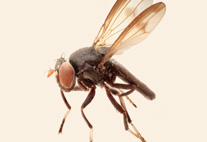Abstract
The lowfin chub, Kyphosus vaigiensis, is reported for the first time off Favignana Island, Sicily, central Mediterranean Sea. The specimen was identified on the basis of morphometric and meristic characters as well as mitochondrial DNA sequences (COI and 16S-rDNA). Two, perhaps three, Kyphosus species—K. bigibbus, K. sectatrix and K. vaigiensis—have been occasionally recorded in the Mediterranean. These species occur both in the Atlantic and Indo-Pacific regions but it is likely they entered the Mediterranean through the Strait of Gibraltar. However, it is unclear whether they have established reproductive native populations in the Mediterranean.

